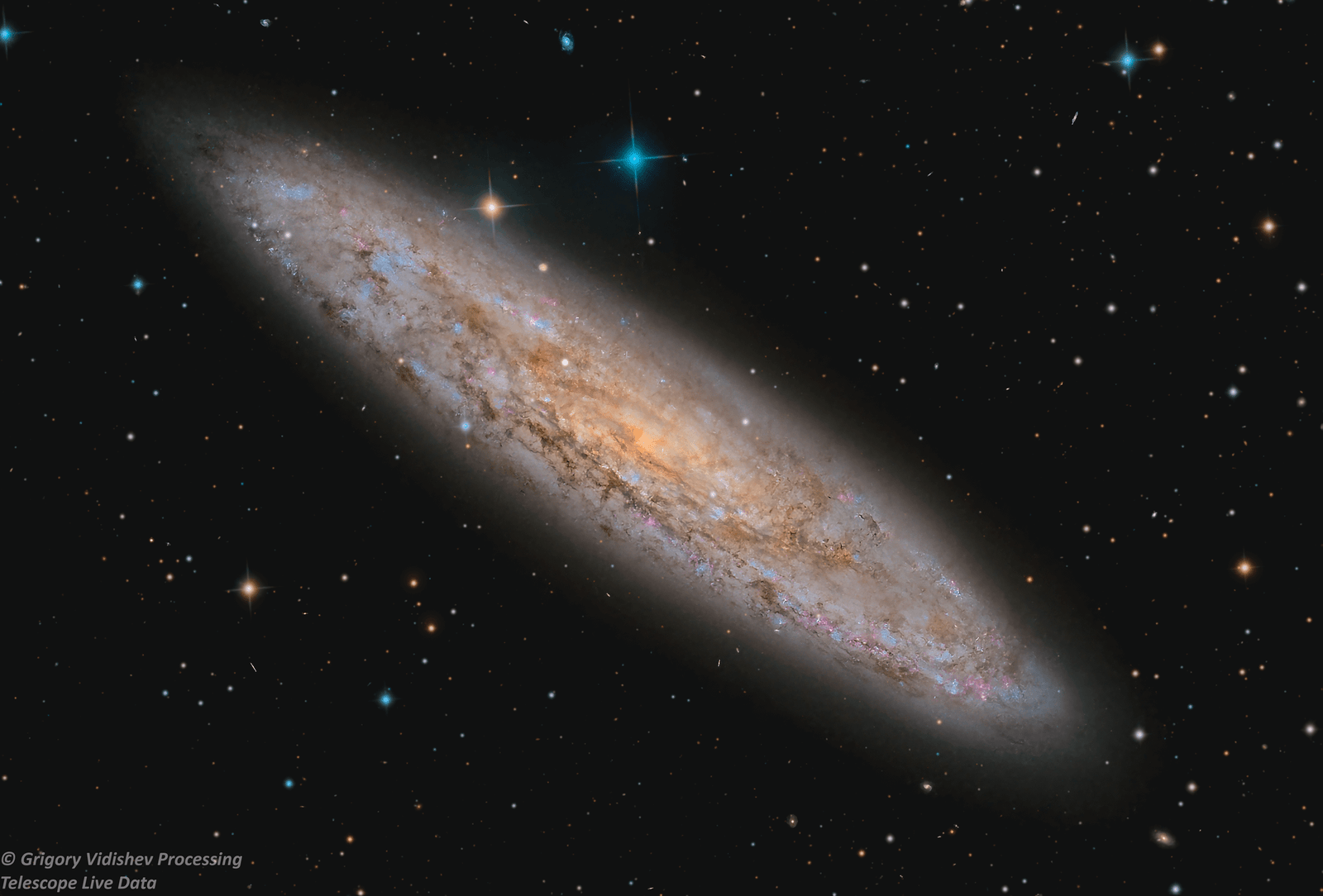

NGC253 Sculptor Galaxy
| Description |
The Sculptor Galaxy, also known as the Silver Coin Galaxy, Silver Dollar Galaxy, Caldwell 65, or by its designated plate number, is an intermediate spiral galaxy located in the constellation Sculptor. It is classified as a starburst galaxy, meaning it is currently experiencing a period of intense star formation. The galaxy was discovered by Caroline Herschel in 1783 during her systematic searches for comets. Later, John Herschel observed it using his 18-inch metallic mirror reflector at the Cape of Good Hope. He described it as “very bright and large (24′ in length); a superb object.” He noted that although its light appeared somewhat streaky, he could see only four large stars and one very small one, which did not seem to belong to the galaxy, as there were many stars nearby. In 1961, Allan Sandage highlighted the Sculptor Galaxy in the Hubble Atlas of Galaxies, calling it “the prototype example of a special subgroup of Sc systems.” He pointed out that photographic images of galaxies in this group are characterized by complex dust patterns, with dust lanes and patches scattered across the surface. The spiral arms are often difficult to trace, defined as much by the dust as by their spiral structure. Bernard Y. Mills, working from Sydney, discovered that the Sculptor Galaxy is also a fairly strong source of radio waves. In 1998, the Hubble Space Telescope captured a detailed image of this remarkable galaxy. |
|---|---|
| Data/Processing Attribution | Data was purchased from Telescope Live and I did its processing only. |
| Distances/Size | Distance to the object- 11.4 million light years; angular size in the sky is about 28’ X 7’ (minutes); size of the galaxy is about 121,000 light years in diameter |
| Equipment | Mount-Software Bisque Paramount MX+ GEM; Scope- Takahashi, 106 mm aperture, 382mm focal length; Camera- QHY600 M Pro. |
| Observatory | Telescope Live, IC Astronomical Observatory, Spain. |
| Exposure | LRGB filters, total exposure- 15 hours 20 min. |
